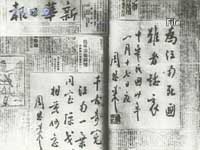Source:
01-13-2006 17:41

The rapid growth in strength of the Communists in the rear areas worried not only the Japanese, but also the Kuomintang. Chiang Kaishek had always regarded the Communists as a greater threat than the Japanese, saying: "The Japanese are a disease of the skin, the Communists are a disease of the heart". 1941 opened with a treacherous attack by Kuomintang forces on the New Fourth Army in Southern Anhui, aimed to provoke a civil war. Meanwhile, the Communists’ Hundred Regiments Campaign was so frustrating to Japanese that they were forced to resort to the tactics of “mopping-up” Chinese base areas behind their lines. Vast areas along the Great Wall in the North were turned into no-go areas, and the Japanese resorted to indiscriminate massacre of soldiers and civilians alike.
The Japanese policy of “burning all, killing all and looting all” destroyed inumerous villages and inflicted huge pains and losses on innocent civilians. Between 1938 and August 1943, the Japanese air force flew some 9,000 sorties, dropping more than twenty thousand bombs. The loss of life and property was particularly severe in Chongqing, the war-time capital.
The Japanese attack on Pearl Harbour dragged the United States into the second world war. After declaring war against Japan, Germany and Italy, China became a key theatre of the Second World War in the far east. As Mao Zedong had predicted three years earlier, an international anti-fascist alliance was thus formed, which would lead to China’s final victory against the Japanese. In the Pacific theatre, China had for four and a half years stood alone against the Japanese. By tying more than seventy percent of Japanese forces down to its territory, China had made a vital contribution to the worldwide war against fascism. China’s staunch resistance had deterred the Japanese from pushing southwards, saving precious time for the US and the Soviet Union to prepare for war.
Editor:Wang Ping

